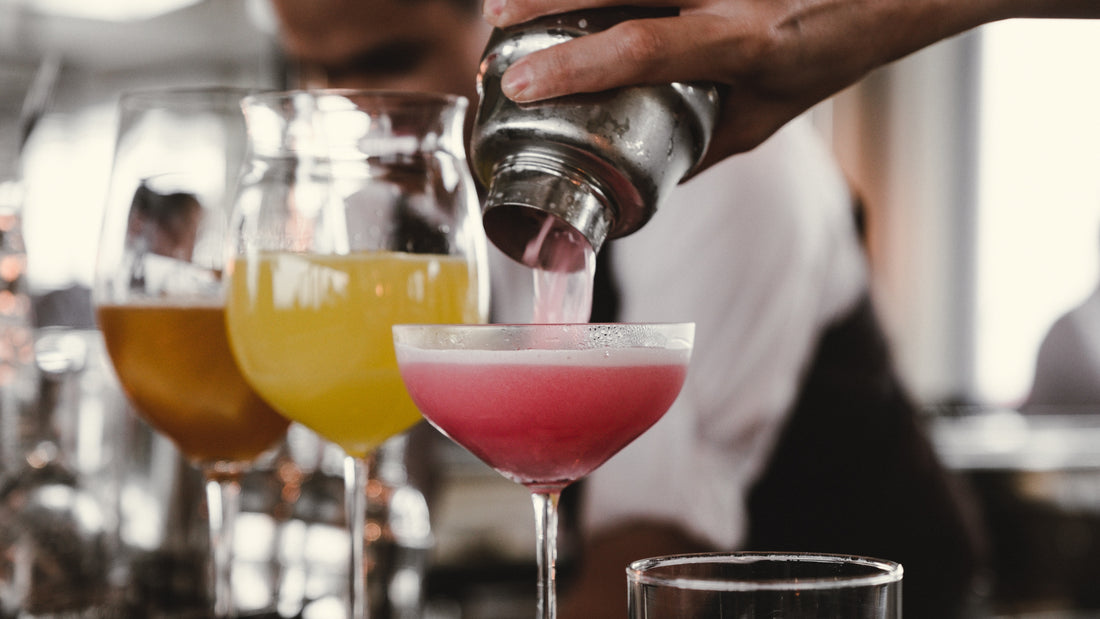
Do Different Types of Alcohol Affect You Differently?
Ask anyone and they will tell you drinking beer makes them feel much different than drinking tequila and drinking wine makes them feel different than drinking whiskey.
People are positive that a certain alcohol makes them social, or more sensual, or tired. But is this anecdotal evidence rooted in any scientific evidence?
While there are thousands of scientific articles assessing the effects of alcohol on the body and brain, to date there is very little research on how different types of alcohol affect the body differently.
While we long for a definitive yes or no answer, the truth is there are factors that may cause a person to feel or behave differently because of the type of alcohol they consume, but ultimately all standard drinks contain that same amount of alcohol.
The biggest difference is actually in our perception and the social context in which we are drinking.
That means our friends, family, music, and general mood affect our drinking more so than the type of alcohol itself. Your mood when you start drinking coupled with the expectations you have of the evening significantly contribute to how the alcohol affects your body.
Many people choose the type of alcohol based on the social situation. For example, you may choose to sip port at a fancy restaurant, drink beer at a football game, and do shots of Fireball while on the dancefloor. Each of these events feels like a different type of effect on your body because you are constrained by different social regulations in each situation. The environment influences your perceived effect of the alcohol on your body more than the alcohol itself.
Each "Standard Drink" has the Same Amount of Alcohol
To start our investigation, it's important to know the alcohol in beer, wine, and liquor is all the same. It is simply ethyl alcohol, also commonly referred to as ethanol. And ethanol is what actually gets you drunk.
The National Institutes of Health implemented the ‘standard drink’ in order to help people understand that while drinks are different sizes, they contain the same amount of “pure” alcohol. Standard drinks (1.5 ounce shot of liquor, 12 ounces of beer, or 5 ounces of wine) each contain approximately 14 grams of ethanol.

Source: National Institutes of Health
Other Factors in Play
If the amount of ethanol in each type of drink is chemically the same, then what could account for the different effects on the body?
Two possibilities are consumption method and speed. Slowly drinking a few beers on a back porch with friends is vastly different than downing a few shots of tequila at a dance club with friends. Having a couple shots of liquor in a short amount of time, will not only decrease your inhibition but they will quickly increase the level of ethanol in your bloodstream.
Even more than this, expectation and social environment play a large role in the effects of alcohol on the body. The alcohol you choose to drink in certain social situations reinforces your original perception of where you want your experience to end up. If you are wanting to get wild and crazy, by all means, tequila shots all around. But if you are expecting a quiet night of conversation, sipping bourbon may be your choice.
Either way, psychologists say that our reactions to various liquors are more in our heads than actual biological responses. It is also in the company we choose to keep while drinking.
A research study from Cardiff University found that people base their level of intoxication on the same gender around them, not on their actual level of intoxication.
In summary, when you are with friends who are drinking heavily, you tend to feel drunker than you actually are and when you are with friends who are drinking less than you are, you tend to think you are less drunk and none of this is based on your true intoxication level.
How Mixers Impact Alcohol's Effects on the Body
If you know for sure that when you drink gin, you end up crying on someone’s shoulder by the end of the night, that seems like perfect evidence for how alcohol affects you differently. It couldn’t possibly be all in our heads? There has to be something else going on.
Another plausible solution to why different alcohols affect the body differently could be the choice of mixers. Most people shoot tequila and whiskey straight up while rum and vodka are often mixed with various juices and or with something super caffeinated such as soda or Red Bull. A caffeinated or stimulant mixer will certainly have an effect on the body and can even mask the effects of intoxication leading you to consume more than you might normally.
On a related note, researchers from Northern Kentucky University found that mixing alcohol with diet beverages actually increases blood alcohol concentration with a breathalyzer compared to the regular sugar-based beverage. Researchers explain the effects of alcohol are mitigated if consumed with nutrients like sugar because it slows the entry of alcohol into the small intestine, where it is absorbed by the body.
Bottom line: the different perceived effects of a given drink could be from the mixer and not from the alcohol itself
Congeners – the missing link between the different effects of alcohol on our mood and behavior
While both psychological expectations and mixers are valid reasons for why different alcohols affect the body differently, it appears there is one more possibility – Congeners.
Congeners are the chemical impurities that are produced as byproducts of the fermentation and distillation process. They contribute to the taste, aroma, and color of the drink. There are varying amounts and types of congeners in different alcoholic beverages. The top shelf choices often contain fewer congeners than your less expensive brands, because the premium and ultra-premium liquors often undergo a more meticulous distillation process thus removing more of the congeners.
Some of the most common congeners include furfural which inhibits yeast, tannins found in wine, fusel oil from the fermentation of whiskey and rum, acetaldehyde, and methanol which is found in higher quantities in darker liquors. The darker the drink, the higher the concentration of congeners.
The problem in scientifically studying how these affect people’s physical and emotional responses lies in the fact that there are so many different types of congeners. Their effect on intoxication is difficult to pinpoint, and a few researchers have tried with inconclusive results.
What we do know for sure is that our body does not always respond well to congeners and they could be the missing link between our varying social and emotional behavior when drinking different types of alcohol.
A Drink is a Drink
Overall, while various factors impact how you feel when you drink, it appears that our own perceptions contribute the greatest impact to what causes different effects on the body from various types of alcohol. While we may prefer to blame the tequila for that night of wild dancing or the wine for making you tell the truth to your family at dinner, the truth is a standard drink is a standard drink no matter how you look at it.



